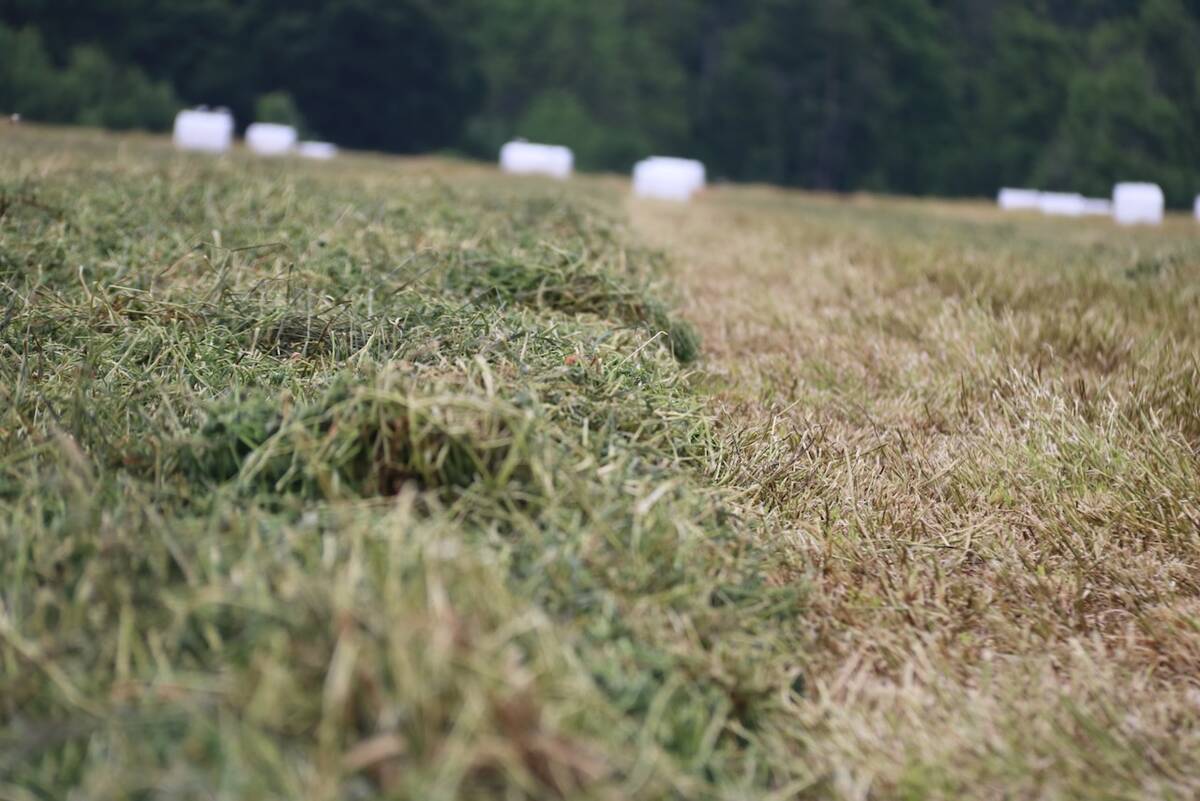Soybean aphids aren’t an annual problem in Manitoba, but lessons from Ontario may be helpful on your farm
Over 2.6 million acres of soybeans were grown in Ontario in 2012, making them Ontario largest row crop,” said Horst Bohner, Soybean Specialist, Crop Technology Branch, Ontario Ministry of Agriculture, Food and Rural Affairs (OMAFRA).
“As soybeans are considered a warm-season crop and were originally a sub-tropical plant, the length of their growing season is a major restriction to growing them in many parts of Canada.”
According to Bohner, in Ontario, glyphosphate-tolerant soybean varieties make up about two-thirds of the crop, while about one-third is non-GMO (genetically modified organisms).
Read Also

New high-performance forage training program to launch in 2026
A new Canadian Forage and Grasslands Asssociation high-performance forage program will be a resource for farmers, agronomists and others in the forage sector.
“The demand for specialty soybeans with identity preservation (i.e. food grade, non-GMO, organic, etc.) has created marketing opportunities for Ontario beyond the traditional end-use of soybeans for oil production and livestock feed.”
Soybean aphids
Soybean aphids originated in Asia. They were first discovered in North America in 2000 and in Ontario in 2001. The aphids have two hosts that complete their life cycle.
“Soybean aphids (aphis glycines) are small, pinhead-sized, pale yellow aphids with black cornicles (“tailpipes”) and a pale yellow tail,” said Bohner. “Adult soybean aphids can be either winged or wingless. Nymphs are smaller than adults and are wingless. Eggs on buckthorn are small, football-shaped and yellow when first laid but turn a dark brown similar to the colour of the buckthorn branch. Eggs are usually laid along the seams of the buckthorn bud.
“Soybean aphids survive as eggs on the twigs of buckthorn species. In the spring, nymphs hatch from these eggs, and the aphids undergo two generations as wingless females on the buckthorn. The third generation develops into winged adults that migrate to soybean plants.
“The aphids then continue producing wingless generations until soybean plants become crowded with aphids and the plants experience reduced quality. Once crowded, winged forms are produced which disperse to less crowded soybean plants.”
According to Bohner, there can be as many as 18 generations of aphids on soybeans annually. “Like most aphids, soybean aphids are all female, born pregnant, and give birth to live nymphs. Males are only born in the fall, so the females and males can mate to produce the egg on buckthorn.
“Lower populations of aphids can live and feed on soybeans without causing yield loss. Once populations reach threshold levels, especially in dry years when the plants are stressed, aphids can cause the plants to abort flowers and become stunted, reducing pod and seed production and quality.”
Bohner says soybean losses from aphids are greatest when soybeans are in the early reproductive stages (R1-R2). At these stages, flowers can abort and impact pod establishment.
During the third reproductive stage (R3), the pod-fill stage, peak infestations of aphids can lead to smaller seed size and a reduction in seed quality.
“Aphids also excrete a sticky substance called ‘honeydew,’” says Bohner. Grey, sooty mould can develop in this substance.
Aphids can also spread the soybean mosaic virus.
Fighting aphids
So how can soybean growers combat aphids? “There are several natural enemies, including the lady beetles (ladybugs), minute pirate bugs, syrphid fly larvae, and parasitic wasps that are helpful in controlling this pest,” said Bohner.
Bohner says, unless the populations are above 250 aphids per plant, natural enemies can manage the problem. In this case, it’s not necessary to use an insecticide, “as it will kill the natural enemies and enable the aphid population to increase above threshold levels.”
Bohner also recommends scouting for spieder mites before applying insecticides to control aphids. If spider mites are present, make sure you chose an insecticide that will control both, so you won’t have a spider mite problem after the insecticide application.
As for Manitoba, Dr. John Gavloski, extension entomologist with Manitoba Agriculture, Food and Rural Initiatives (MAFRI), said, “We’ve had years where the soybean aphid populations start to climb, and in some fields approached the economic threshold, then the aphid population quite rapidly, naturally declined. Predators and parasitoids are the main reasons for this.
“Studies in the U.S. have shown that beneficial fungi can also cause very significant declines in soybean aphid populations. In one such study, Pandora neoaphididis caused 84 per cent infection in an outbreak of soybean aphid population in 2003, after which the aphid population crashed.
“As far as is known, soybean aphids don’t over-winter in Manitoba. It’s an occasional problem for soybean growers in Manitoba, but not an annual one.
“Soybean aphids were an economical concern for many soybean growers in Manitoba in 2006, but by 2007, populations were extremely low and not concerning.”
According to Gavloski, “The insect population or level of damage where the dollar value of yield or quality loss equals the costs of control is called the “economic injury level.”
“Economic thresholds and injury levels depend upon the cost of controlling the insects, the yield potential and market value of the crop, and, for economic thresholds, the time delay between scouting and application,” Gavloski says.
For aphids, a recent study calculated the economic threshold for applying insecticide to be 273 aphids per plant. Earlier studies had established an economic threshold of 250 aphids per plant, with more than 80 per cent of plants infested. This threshold was developed through consensus after prior soybean aphid outbreaks. †














